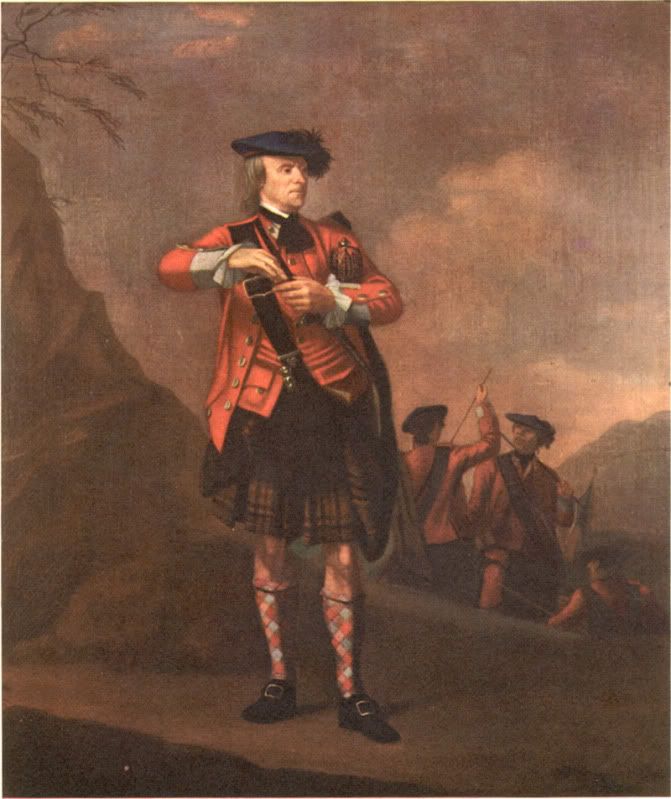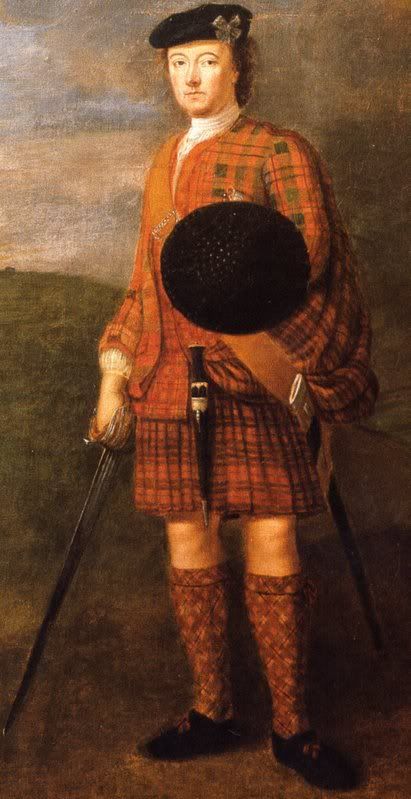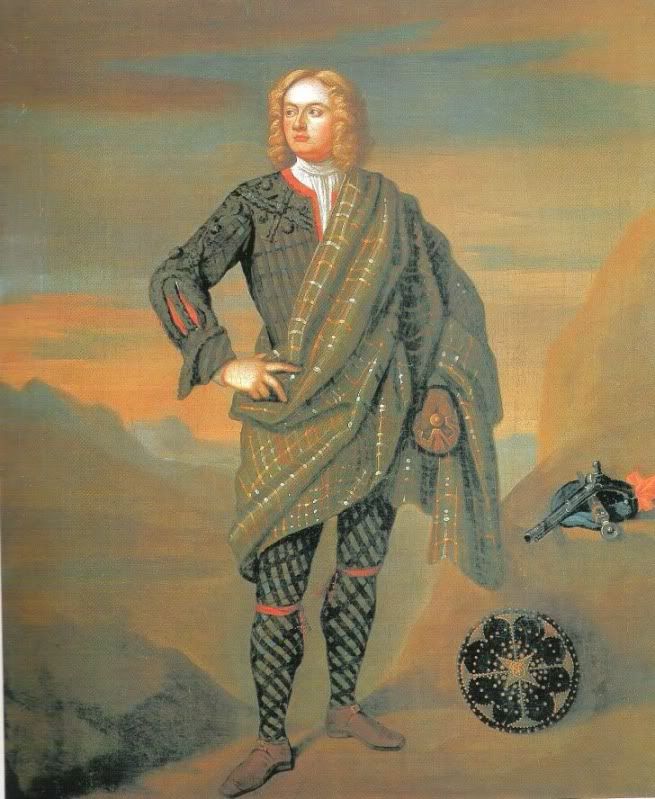|
-
Great analysis of 19th Century footwear...
Thanks for that post OC Richard...thoroughly interesting study. I note that all the toes on MacLeay's portraits appear squared off and rather pointy (no toe box). Is this representative of the footwear of the time, or more the result of MacLeay's painting/drawing style? I know that his works are renowned for their attention to detail, etc...
"If there must be trouble, let it be in my day, that my child may have peace." -- Thomas Paine
Scottish-American Military Society Post 1921
-
-
 Originally Posted by longhuntr74

Thanks for that post OC Richard...thoroughly interesting study. I note that all the toes on MacLeay's portraits appear squared off and rather pointy (no toe box). Is this representative of the footwear of the time, or more the result of MacLeay's painting/drawing style? I know that his works are renowned for their attention to detail, etc...
I talked to the foremost shoe historian in the US about this very thing and he told me that no toe stiffeners were the norm during this period.
You can also see this in the book Shoes by Dame June Swann (who is considered the worlds foremost authority on shoe history). The book features photo of period shoes from the collection at the Northampton She Museum.
DWFII--Traditionalist and Auld Crabbit
In the Highlands of Central Oregon
-
-
About 18th century shoes, fortunately good reproductions of those are widely available.
It would be an interesting study, to go through all the 18th century portraits which show shoes and catalogue the various styles.
In looking through some reproductions of old paintings, most Highland chiefs are wearing what look like ordinary laced shoes, or the typical 18th century buckles shoes.
I don't have many images to hand of such, but here's one of the earliest clear depictions of Highland Dress, c1660, showing very interesting shoes

Lord Duffus in 1700

the Piper to the Laird Grant 1714

Here are the MacDonald Children in the mid 18th century

and Highland Dress with trews

and further on in the century, a Highland officer c1780 wearing the typical shoes of the period, with lovely silver buckles

at the end of the century Sir John Sinclair

Last edited by OC Richard; 15th May 11 at 05:04 PM.
-
-
Now that I think about it, what a contrast between 19th century and 18th century Highland footwear!
So much variety in the 19th century, so many different styles. But in the 18th century paintings there are no Highland-specific shoes at all, only the typical laced and buckled shoes same the the English wore.
Where are the nascent ghillies? Where are the aboriginal Mary Janes?
We know that in earlier times the Highlanders did have their own distinctive Gaelic footwear, related to the pampootie (pamputa in Gaelic), which are still worn in the Aran isles off the west coast of Ireland

These traditional Gaelic shoes are described in 1542, John Elder writing of the dress of Highlanders to King Henry VIII
"...we can not suffir bair footide...after we have slayne redd deir, we flaye of the skyne, bey and bey, and settinge of our bair foote on the insyde therof, for neid of cunnynge shoemakers, by your Graces pardon, we play the sutters; compasinge and mesuringe so moche therof, as shall retche up to our ancklers, pryckynge the upper part thereof also with holis, that the watrer may repas wher it entris, and stretchide up with a stronge thwange of the same, meitand above our saide ancklers, so, and pleas your noble Grace, we make our shoois: Therefor, we using suche maner of shoois, the roghe hairie syde outwart..."
At a Highland Games a year or so ago there was a woman with a booth selling pampooties that she makes. Oddly, when I talked to her, I learned that she had never heard of pampooties! She was calling them "ancient ghillies" or summat.
-
-
-
-
Thanks
Thank you Richard for the research and time you took to post all of these.
In addition to all of the shoes, I find the consistent kilt length to be quite telling as well. Of course all things change, but different artists, of different subjects, and I am assuming in different locals, all show the length of the kilt clearly at the top of, or slightly above, the knee.
This comes as no surprise to a certain gentleman from The Highlands, I am sure 
Thanks again for posting these.
-
-
 Originally Posted by MacMillan's son

Thank you Richard for the research and time you took to post all of these.
In addition to all of the shoes, I find the consistent kilt length to be quite telling as well. Of course all things change, but different artists, of different subjects, and I am assuming in different locals, all show the length of the kilt clearly at the top of, or slightly above, the knee.
You're very welcome!
Yes it's amazing, isn't it, to go to a modern Highland Games and see how low kilts are, and how high hose are, in Pipe Bands especially. The military though retains older look of slightly higher kilt and somewhat lower hose, showing more knee, precisely as we see in that c1780 Highland officer above.
-
Similar Threads
-
By NorCalPiper in forum Historical Kilt Wear
Replies: 8
Last Post: 10th April 11, 09:45 PM
-
By lethearen in forum The Pub
Replies: 8
Last Post: 20th January 11, 11:46 AM
-
By Twa_Corbies in forum Show us your pics
Replies: 27
Last Post: 19th March 09, 09:22 AM
-
By Rogerson785 in forum How to Accessorize your Kilt
Replies: 9
Last Post: 31st January 08, 08:59 AM
 Posting Permissions
Posting Permissions
- You may not post new threads
- You may not post replies
- You may not post attachments
- You may not edit your posts
-
Forum Rules
|
|





























Bookmarks